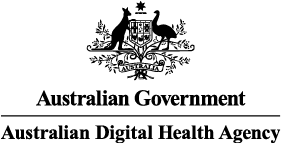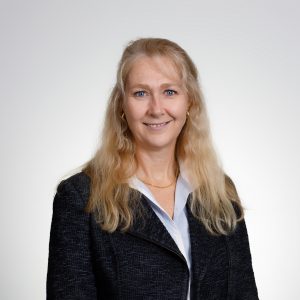Achieving digital breakthroughs in healthcare: A conversation with ADHA’s CEO Amanda Cattermole


The role and purpose of the Australian Digital Health Agency (ADHA) is to bring together different parts of Australia’s complex and asymmetrical healthcare ecosystem to support digital innovation and achieve a “modern, accessible healthcare system”.
To advance these goals, in August 2022, ADHA signed a memorandum of understanding with standards development organisation HL7 Australia Ltd to support the development of robust, easy to adopt and properly managed digital health standards.
As ADHA CEO Amanda Cattermole stated when the MoU was signed: “The objective is to create a new era of digital health in Australia with strong governance. This means open and collaborative processes for the agreement, development, testing, publishing and maintenance of digital health standards.”
HL7 Australia recently spoke with Amanda about ADHA’s role and purpose, why the collaboration with HL7 and other organisations and agencies is important, the challenges facing Australia’s healthcare system and what is being done by ADHA and others to mitigate these.
HL7: Can you share with our readers a little background on the ADHA, its setup and broader role in helping to achieve health standards and interoperability in Australia.
Amanda: First it’s important to understand that the agency was established by the states and territories and the Commonwealth and is funded by all of them. In establishing ADHA, there was broad recognition that the objective of interoperability and a connected healthcare system could never happen without buy-in from all stakeholders. We were set up to help with that buy-in as a coordinator in the development and stewardship of digital health standards in Australia.
Can you describe some of the ways in which you drive that coordination?
At a high level, we set the parameters for what an interoperable healthcare future looks like through our National Healthcare Interoperability Plan. This sets the expectations, the domains in which we need to work, and the way in which we think we should go about this in the one- to-five-year horizon. We also
engage with the standards community to support and enable standards development to flourish in Australia. That includes, importantly, our relationship with HL7.
Let’s go into a bit more detail on the interoperability plan, including HL7’s role in the broader goals.
Over the past couple of years, my team led a very broad-ranging consultation on what is needed to deliver health interoperability in Australia, which culminated in this plan. It has strong support from across the sectors. The plan articulates a nationally agreed objective to get to this new level of digital
maturity and bring us to a much more fully connected healthcare system. It defines the domains that need to be tackled to get there and sets out actions under each of those domains. One of the domains that is most important in the work we’re doing with our colleagues at HL7 is that there needs to be a live,
innovative, mature national digital health standards program.
The recently signed MoU serves to support the plan by helping to develop digital health standards. This is something we’re deeply committed to supporting and stewarding, along with our work with other partners, including CSIRO, who we’re collaborating with on clinical data and digital standards and
terminologies.
These objectives have support from our jurisdictional colleagues, including in industry. It’s something the Australian public expects and demands so that their information moves seamlessly across the healthcare system and ensures clinicians have it in front of them during any interaction with the consumer.
It won’t be easy, but these MoUs with partners like HL7 and CSIRO help to ensure broad agreement to get us to that next point.
What do you believe are the barriers that have made it hard to achieve
interoperability before now?
There are many challenges to standardisation but none are insurmountable as long as all the different parts of the system are working together and moving in the same direction. One challenge is just the sheer complexity of health itself. You only have to think about a system that is funded both federally and at the state level, privately and publicly, and is supported through the acute system, the primary care system and a network of specialists and allied health providers. On top of that any one hospital has a huge number of digital systems that come together, both administratively and clinically. And that is
extrapolated across multiple different hospitals.
To address this challenge, you have to be able to map a lot of interconnected parts in order to progress to a system that can meaningfully share information, support data analysis, protect data in whatever part of the system it’s in, and enable that to be brought to bear for the benefit of both clinicians and, really
critically, Australian healthcare consumers.
Digital innovation in healthcare has been talked about as a laggard, but more recently – accelerated in part by COVID-19 – it has started to surge ahead. In addition, we’ve seen a new national conversation about digital enablement in health. Australians have moved to a point where they expect something quite different from their healthcare system. They expect connectivity, they expect continuity of care, they expect their information to move with them and to be available to those providing their healthcare.
How do we get to that next step, building connected, patient-centred healthcare system?
It’s not easy, but we’ve got a lot of things in our favour. One is that there is so much momentum now in the same direction, accelerated by the events of the past few years. We’ve also got good building blocks, including a personally controlled electronic health record, an individual health identifier service that
enables us to know who each person is in the system and, above all, consumer engagement. By working with HL7 and other partners, we’re in a position to grow that development and be the enabler for this transformation.
HL7 is an absolute cornerstone in making this happen and our partnership is critical to driving the change we’re talking about. Our deepening collaboration with HL7 combined with our role as steward will not only help that standards development but will support the broader healthcare community to engage with those changes. We need our health community to be digitally literate if we’re going to enable information to move around the healthcare system in the way that is needed to support better healthcare outcomes.
If there is one takeaway or call to action from this interview you would like to give to the broader healthcare community, what would it be?
We have long spoken about the world we want, but we all had far too many deeply held views and positions for us to get there. We now have the ingredients to move forward. So, my key takeaway would be to ask every stakeholder, partner – anyone who is part of the broader healthcare system – to dig deep and work together to support and participate in these transformational changes and help ensure great healthcare for all Australians well into the future.
Amanda Cattermole PSM
“Ms Amanda Cattermole PSM is the Chief Executive Officer of the Australian Digital Health Agency, a role she commenced in September 2020. The Agency is auspiced by all the governments of Australia to lead digital health strategy for Australians and to drive digital innovation. It also builds national health infrastructure and delivers national digital health products and services to support Australia’s progress towards a safer and more efficient health system.
Amanda has previously held senior roles in the Commonwealth Departments of Treasury, Prime Minister and Cabinet and Families, Housing, Community Services and Indigenous Affairs, Services Australia, the Victorian Department of Health and Human Services and the Western Australian Department of Indigenous Affairs. In her earlier career Amanda worked as a lawyer in Victoria, the Northern Territory and Western Australia.”
Read the PDF Version of the interview with Amanda Cattermole PSM here.
Want to become a Benefactor? Contact David at info@hl7.com.au
